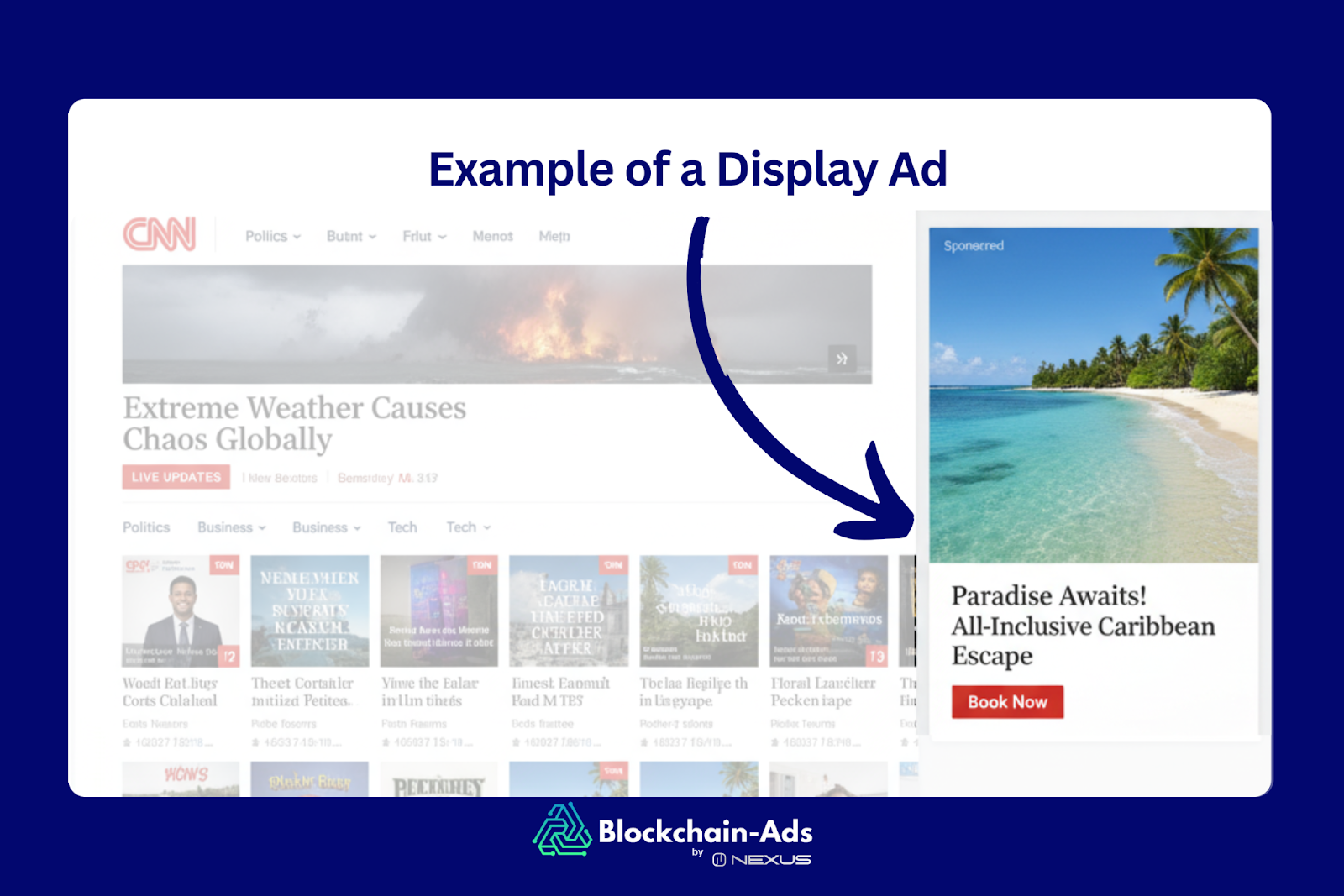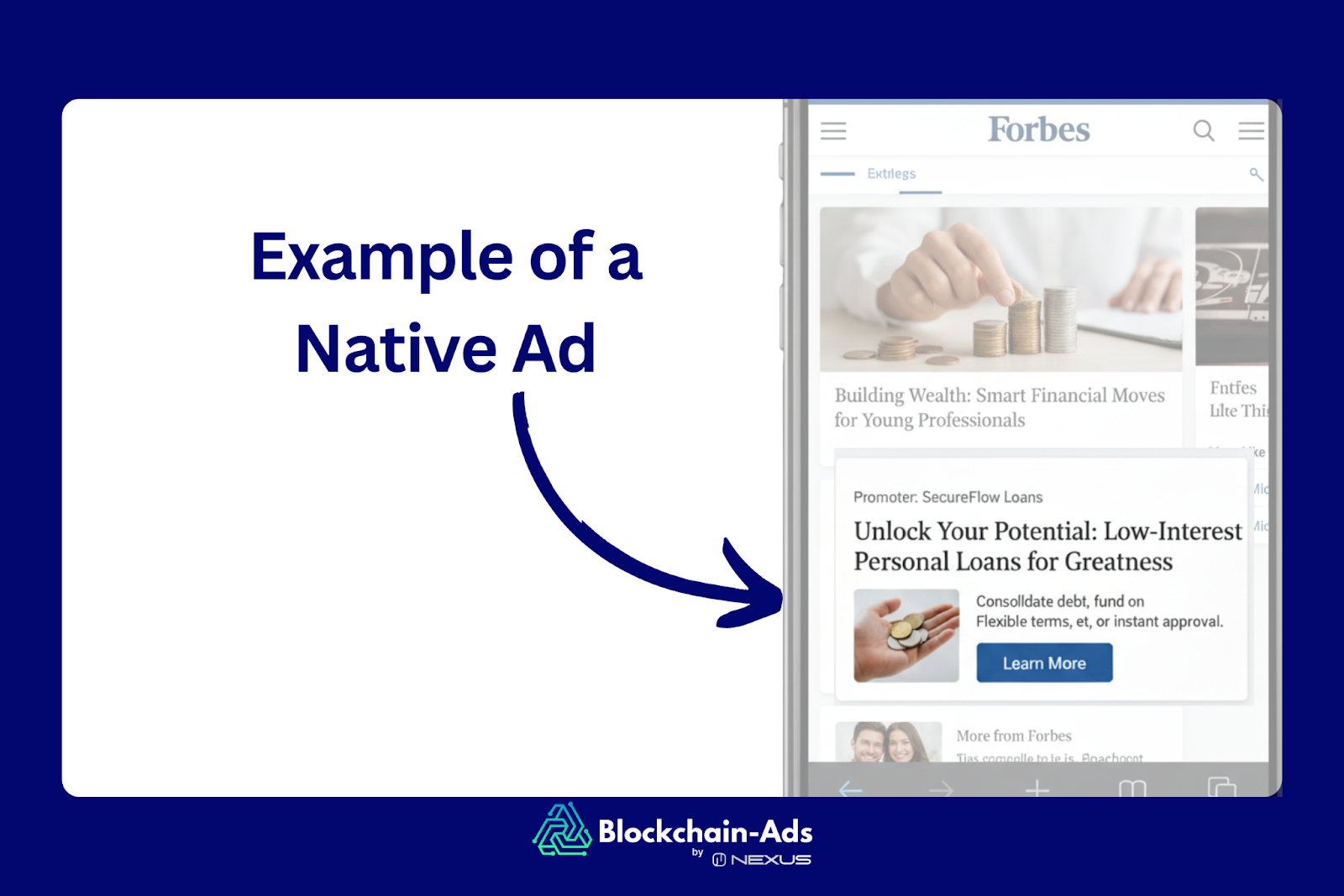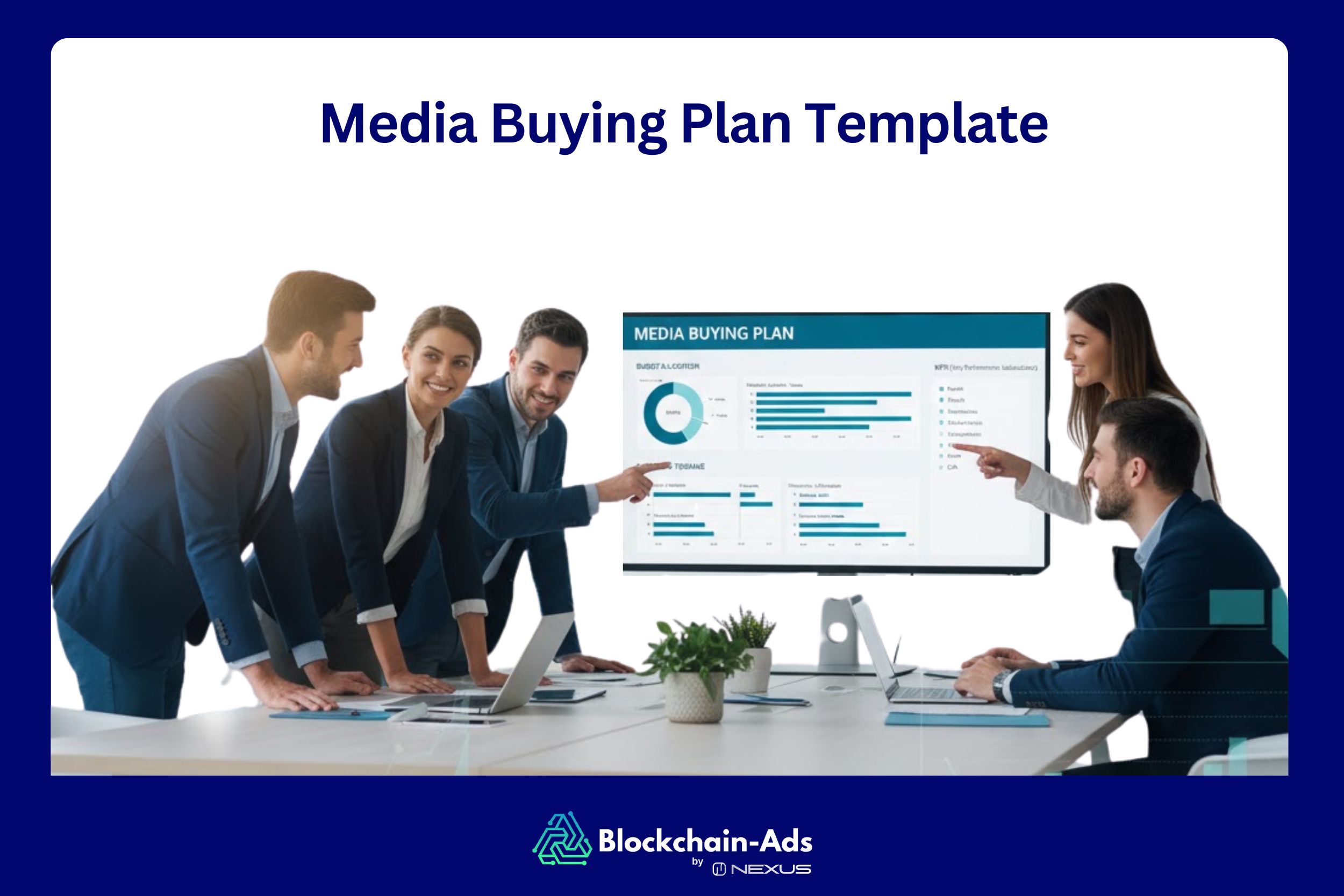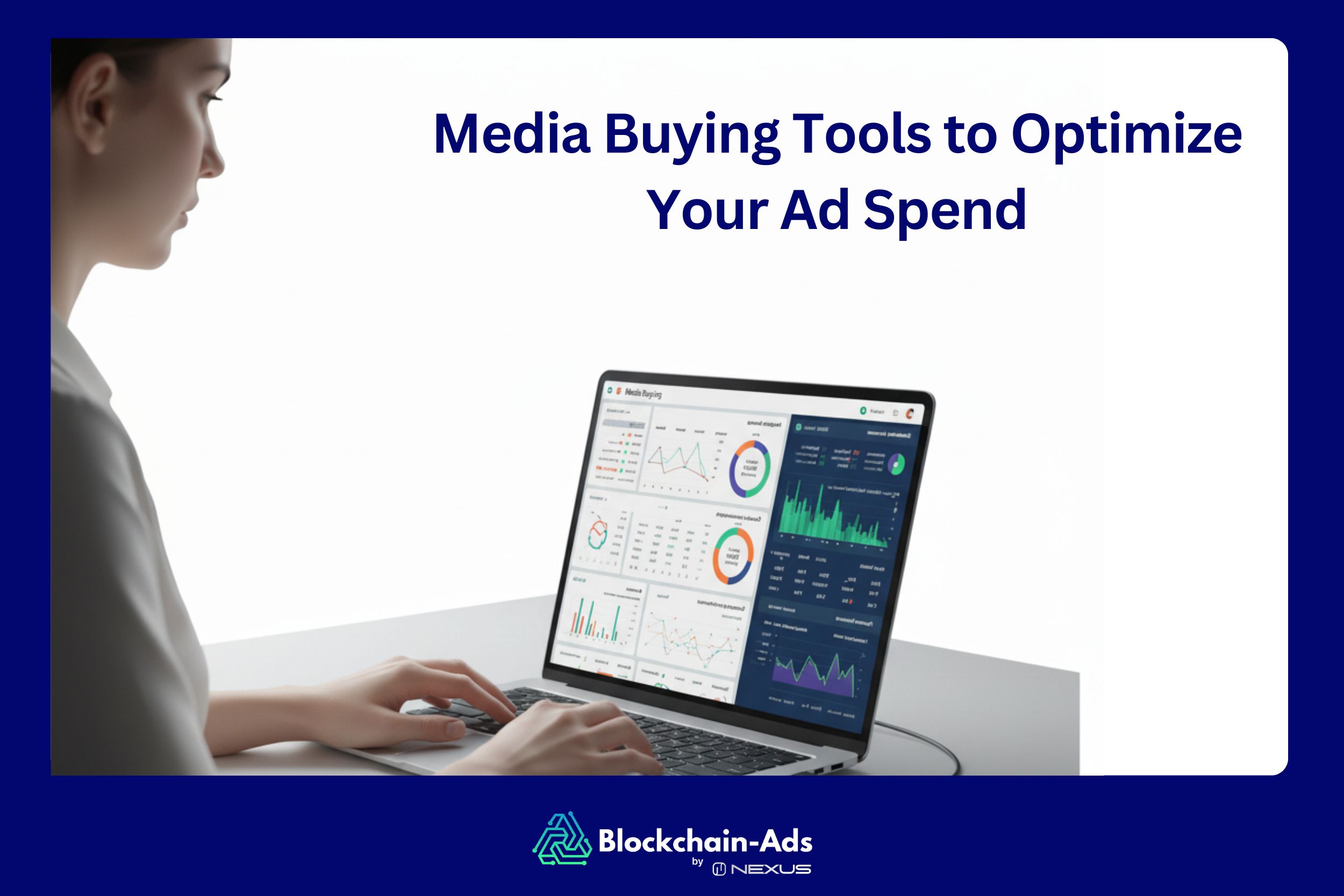Native Ads vs Display Ads: Which Format Delivers Better Results?
Heading
- Cointelegraph Formula offers various ad formats to 8 million monthly readers across 190+ countries, leveraging its trusted name in crypto.
Every scroll, swipe or click you make online basically puts an ad in front of you, whether you realize it or not. Some will appear for your attention with bold graphics and strong CTAs, while others will quietly blend into the article you’re reading or the feed you’re browsing.
That’s the difference between display advertising and native advertising; the first will interrupt and the later naturally integrates. Of course, both have a role to play, but knowing when to use each can help make the difference between wasted spend and serious ROI.
This guide will compare native ads vs display ads by actually showing how they perform depending on your goals. We’ll cover:
- The key differences between Display and Native Ads
- Pros and cons of Display Ads
- Pros and cons of Native Ads
- When to use display online advertising
- When to use native online advertising
- How to choose between the two
- If it's a great idea to integrate both Native and Display Ads in one campaign
- Why Blockchain-Ads is the best platform to run your display and native ads campaigns.
What Are the Key Differences Between Display and Native Ads?
Basically, display ads and native ads take two completely different approaches when it comes to digital marketing. Defining features of native online advertising include seamless integration with platform content, a non-disruptive experience, and content-driven. On the other hand, display advertising features visual elements, direct promotions or strong CTA, can come in a variety of formats, and is different from your search results.
Here’s a quick breakdown of what sets them apart:
To give you an in-depth explanation of these two digital marketing strategies, we’ll break each one down more deeply.
Display Ads Explained

Display ads are a form of visual digital advertising that appears across websites, apps and digital platforms in designated ad spaces. They can be standard banner ads, rectangles or even interactive boxes. Often, they appear at the top of a news site, along a blog’s sidebar or at the bottom of a video player. Display ads rely on formats that include static images, animated GIFs, HTML5 creatives or rich media.
Display Advertising: Pros and Cons
Before you consider implementing display advertising into your campaign, it is better to note the unique advantages and drawbacks:
Display Ad Platforms
Display advertising is supported by several ad platforms. However, select carefully because they don’t offer the same features, targeting capabilities, ad formats or pricing model. Here are the top options that are worth checking for your campaign’s performance and overall ROI.
- Blockchain-Ads: Excellent for restricted industries (CBD, gambling, adult, crypto). The platform uses interest based and behavioural targeting to run compliant ads in display formats.
- Google Ads: It uses the Google Display Network to reach a massive audience across millions of websites and apps. The platform offers contextual targeting, remarketing campaigns and broad integration with other Google tools.
- Microsoft Ads: This is a great platform for reaching audiences across Microsoft-owned properties such as Outlook and MSN. It’s the best for desktop-heavy ad campaigns.
Native Ads Explained

Native advertising is the ad formats that blend into the surrounding content. They basically match the visual design and functions of the media platform they appear on. This makes them feel like they’re part of the user’s natural browsing experience.
Common examples of native placements include in feed ads, recommendation widgets on publisher sites or sponsored articles that mirror editorial content layout. You can find all these native formats on popular platforms such as Blockchain-Ads, Taboola, Outbrain and even Facebook/Instagram.
Native Advertising: Pros and Cons
Here’s what you should expect from native ad campaigns:
Native Ad Platforms
If you want to run native ad campaigns, the following platforms will offer a great place to start:
- Blockchain-Ads: One of the only native ad platforms designed for restricted verticals like Adult, gambling, CBD, and crypto. It also supports smart wallet-based targeting.
- Taboola: Global content discovery platform offering native ad placement on premium publisher sites.
- Outbrain: Native ad platform that focuses on editorial-quality placements and is strong for content-driven campaigns.
- Revcontent: Native ad platform offering smooth targeting and works well for affiliates and performance marketers.
When Should You Use Display Advertising
Display advertising works the best when you want quick visibility, attention-grabbing creatives or even broad reach. Here are four specific scenarios where display ads shine:
Improving Brand Awareness
If you want to reach a large audience, display ads will help spread your message across websites and apps. For example, OKX crypto exchange, wanted to attract potential customers interested in crypto trading. It used Blockchain-Ads display advertising campaigns and attracted 3,000+ traders, and the transaction volume increased by $1.1 M.
Making a Visual Impact
Display ads are also great when you want bold and image-led storytelling. With formats like interstitials and HTML5 creatives, you can build rich visuals that capture attention quickly. DSPs like Blockchain-Ads use smart display and will help you achieve 25% higher conversion rates than generic display ads.
Reaching a Niche Audience
Advanced targeting options allow display ads to reach specific groups based on behavior and interest. For example, Blockchain-Ads leverages advanced audience intelligence by combining behavioral data and interest graphs to deliver precise audience targeting across many sectors.
Retargeting Previous Site Visitors
Display ads are also effective for retargeting users who have interacted with your site or content before. This helps keep your brand top-of-mind and encourages conversions. For example, Watchfinder used Google display ads to increase the average order value and decrease the cost per acquisition. They retargeted 20 groups of people who demonstrated purchase intent but didn’t make an order. Result? 1,300% ROI on ad spend.
When Should You Use Native Advertising?
Premium native ads shine when you want to build trust, drive higher engagement or blend seamlessly into an editorial environment. Since they look and feel like content, they’re great for storytelling and content amplification. Here’s how you can use them:
Advertising on a Tight Budget
Native advertising usually has lower CPCs compared to display. This is especially true if you’re running content-focused campaigns. For example, Seznam Brand Studio and Renault created a small-budget campaign to increase brand awareness and achieved a 12% increase in the overall awareness.
Easier Campaign Attribution and Accountability
Digital marketing campaign performance tracking and accountability are simplified with native ads. This is because conversions are basically measured only after the click is made. Its focus on post-impression conversions gives marketers more evidence of effectiveness and performance than a traditional display ad campaign.
Amplifying Brand Content
Over the years, SEO has become challenging since it takes a lot of time for content to be indexed and ranked. Social platforms such as X, Facebook and Instagram continue to have fluctuating ad costs and declining organic reach. This has led advertisers to look for alternative methods.
Native ads here have emerged to address the need to amplify brand content on demand, ultimately helping advertisers and publishers to reach their target audience more efficiently.
Moving Beyond Traditional Content Marketing
Publishing blog posts and hoping for SEO wins is slow nowadays. Native advertising will help put that content in front of the right reader faster. It diversifies your strategy by seamlessly integrating promotional content into a web page and platforms your audience already engages with.
This helps provide advertisers a more natural and less intrusive way to capture attention of your target audience and drive conversions.
How to Choose Between Native and Display Advertising
Choosing the right ad format often depends on your campaign’s objectives, your audience and how much creative capacity you have. Here’s a quick framework to help you get started:
Can You Combine Native and Display Ads in One Campaign?
Yes, and it’s really important. Smart advertisers use native ads for top-of-funnel engagement and then re-engage those same users with display ads later on.
For example, you can start with a native ad campaign with promoted listings, a guide, or an explainer. Once the users click, you can retarget them using display banners that push a strong CTA.
According to research, combining these two digital advertising strategies can help increase CRT by up to 30% compared to using single-format campaigns. Many platforms such as Blockchain-Ads now allow you to easily manage both native ads and display ad formats within one dashboard.
What’s the Best Platform to Run Display Ads and Native Ads?

Blockchain-Ads is the best platform to run display and native ads because it makes it easy to set up these campaigns on one platform. You pick your campaign goal, then choose either display ads for quick attention or native ads to blend in. The setup is simple, and everything works smoothly together for better results.
What truly sets Blockchain-Ads apart is its Nexus artificial intelligence engine. Nexus AI from Blockchain-Ads watches your campaign and learns which ads are working best. It moves the budget towards the display or native formats getting more engagement, so you get more for your spend. You see every change, so you know how your budget is being used and why.
Many brands have successfully scaled with Blockchain-Ads, running both display and native ads for regulated verticals like iGaming, finance, tech, CBD, crypto, gaming, adult, and AI. Case studies highlight how these companies have achieved measurable growth in brand awareness, user acquisition, and conversions by combining these ad formats under one roof.
Qualify and get acess to Blockchain-Ads
Lorem ipsum dolor sit amet, consectetur
Quick Definition

Talk with some of our current partners
View all success stories

Reach 12M+
Engaged Web3 users across 10,000+ websites and 37 blockchains.






.png)

.png)

.png)


